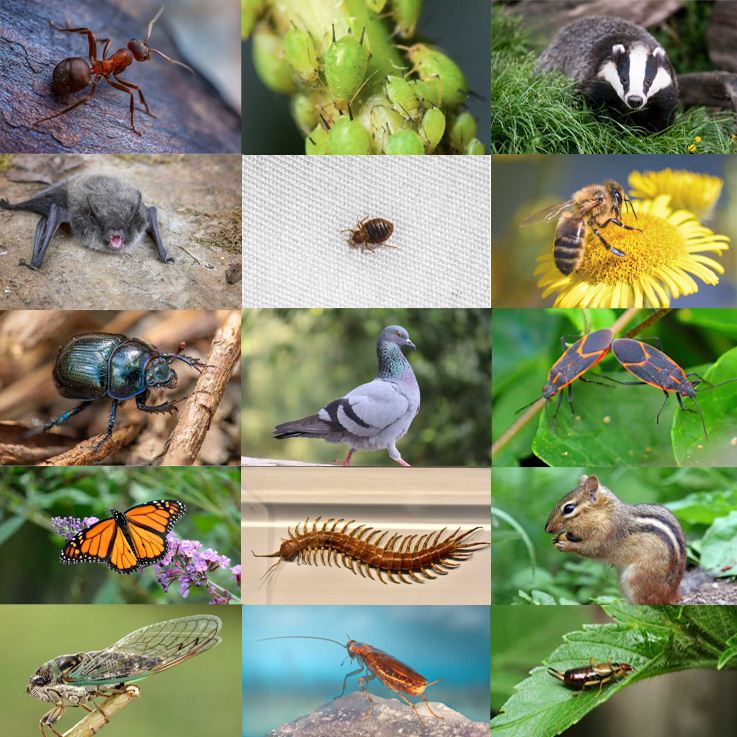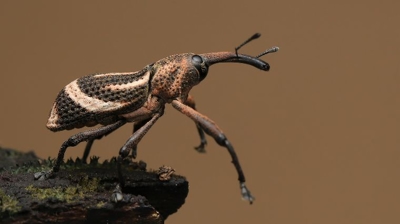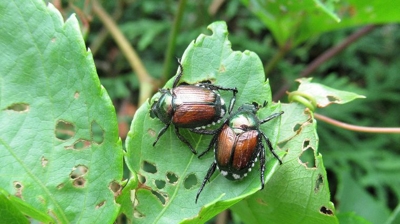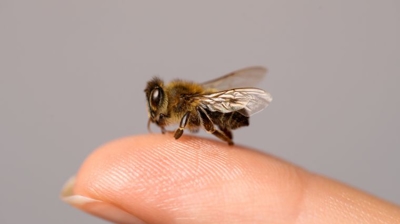
Mormon Crickets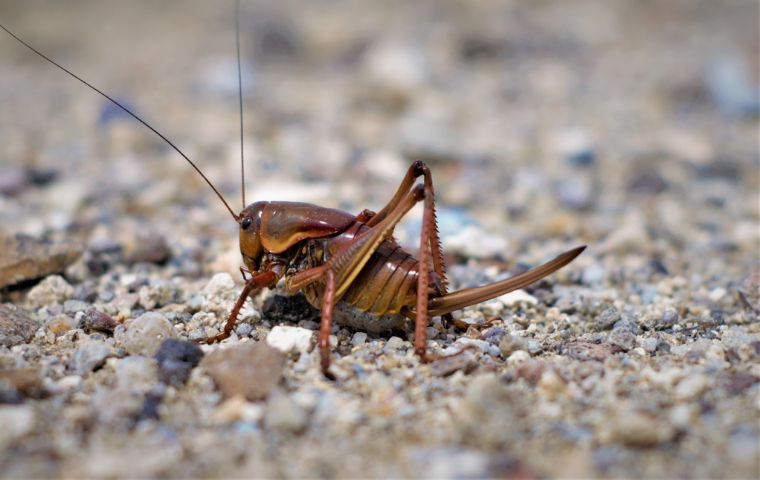
What Are Mormon Crickets?
Mormon crickets (Anabrus simplex), also known as "Mormon grasshoppers," are not actually true crickets but are a species of katydid that belongs to the Tettigoniidae family. These insects are primarily found in the western United States and parts of Canada, particularly in arid and semi-arid regions. They are known for their distinctive appearance and unique behavior. Here is a comprehensive overview of Mormon crickets:
- Appearance: Mormon crickets are large insects, with adult females typically reaching 2 to 3 inches (5 to 7.5 centimeters) in length, while males are smaller. They have a robust body covered in brown or black exoskeletons, with a series of stripes or bands running along their bodies. Their long antennae and strong hind legs are characteristic features.
- Habitat: These insects are primarily found in open grasslands, sagebrush, and desert regions of the western United States, such as Idaho, Nevada, Utah, and parts of Canada. They thrive in areas with dry and arid conditions.
- Behavior: One of the most notable aspects of Mormon crickets is their tendency to form dense marching bands or swarms, which can consist of thousands or even millions of individuals. These swarms can be a significant agricultural pest, devouring crops and vegetation as they move. Contrary to their name, they are not true crickets and do not produce the characteristic chirping sound associated with crickets.
- Diet: Mormon crickets are omnivorous and opportunistic feeders. They primarily consume grasses, forbs, and other vegetation but have been known to eat dead insects and even each other when food is scarce. During swarming events, their voracious appetite can lead to substantial agricultural damage.
- Life Cycle: The life cycle of Mormon crickets typically consists of several stages, including egg, nymph, and adult. They lay their eggs in the soil during late summer or early fall, which then hatch in the spring. Nymphs resemble miniature adults and go through several molts before reaching adulthood.
- Economic Impact: Swarms of Mormon crickets can pose a significant threat to agriculture, damaging crops, pastures, and rangeland. Efforts are made to control their populations through various means, including the use of pesticides and natural predators.
- Natural Predators: Several predators, including birds (such as seagulls and crows), rodents, and some insects, feed on Mormon crickets. These natural predators help keep their populations in check.
- Cultural Significance: Mormon crickets have historical significance in the American West, particularly in the context of early Mormon pioneers. Legend has it that a plague of these insects threatened the crops of the pioneers in the 1840s, and it is said that seagulls came to their rescue by devouring the crickets, an event known as the "Miracle of the Gulls."
Mormon crickets are large katydids that are known for their swarming behavior and potential agricultural impact. They play a unique role in the ecosystems of arid regions and have historical significance in the American West. Efforts to manage their populations are essential to mitigate the damage they can cause to crops and vegetation.
Are Mormon Crickets Dangerous?
Mormon crickets (Anabrus simplex) are not typically known for biting humans or other animals. They are primarily herbivorous insects that feed on plant material, including grasses and forbs. However, there are a few important considerations to keep in mind:
- Defensive Behavior: When cornered or threatened, Mormon crickets may exhibit defensive behaviors. They can use their mandibles to pinch or bite if they feel threatened. This behavior is not common and is more likely to occur when they are handled or provoked.
- Cannibalism: In certain situations, particularly when food is scarce or population densities are high, Mormon crickets have been known to engage in cannibalism. This means they may bite or consume other injured or dead crickets, including individuals of their own species.
- Handling Precautions: While the risk of being bitten by a Mormon cricket is generally low, it's still a good practice to handle them with care and avoid provoking them. If you need to interact with these insects for scientific research or other purposes, it's advisable to use gloves or other protective gear.
In general, Mormon crickets are not considered a significant threat to humans in terms of biting. Their primary interactions with humans usually involve agricultural concerns when their large populations can damage crops. If you encounter Mormon crickets in their natural habitat, it's best to observe them from a safe distance to avoid any potential defensive responses.
Learn more: Do Mormon Crickets Bite?
What Do Mormon Crickets Look Like?
Mormon crickets (Anabrus simplex) are large insects with distinctive physical characteristics. Here is a detailed description of their appearance:
- Size: Adult female Mormon crickets are typically larger than males, measuring between 2 to 3 inches (5 to 7.5 centimeters) in length. Males are somewhat smaller, but both genders are robust in build.
- Body Shape: These insects have a robust and elongated body with a cylindrical shape. Their bodies are covered in a tough exoskeleton.
- Color: Mormon crickets typically have brown or black exoskeletons. The exact coloration can vary, but they often have a mottled or striped appearance. Their coloration helps them blend into their arid and semi-arid habitats.
- Head: They have a well-developed head with a pair of large compound eyes. Their antennae are long and slender, extending forward from the head.
- Legs: Mormon crickets have six legs, like all insects, with the hind legs being particularly strong and adapted for jumping. These powerful hind legs allow them to leap significant distances.
- Wings: While they have wings, Mormon crickets are flightless and are unable to fly. Their wings are relatively short and are not functional for powered flight.
- Stripes and Bands: One of their distinguishing features is the presence of stripes or bands along their body, which can be seen as they crawl or hop. These stripes often vary in color and intensity but contribute to their overall appearance.
- Sexual Dimorphism: As mentioned earlier, female Mormon crickets are larger than males, and their differences in size and shape are noticeable upon close inspection.
While they are called "crickets," Mormon crickets are not true crickets but belong to the katydid family (Tettigoniidae). They lack the typical chirping sound associated with true crickets. Their unique appearance and swarming behavior make them distinct within the insect world, and they are particularly notable in their native habitats in the western United States and parts of Canada.
Where Are Mormon Crickets Found?
Mormon crickets (Anabrus simplex) are primarily found in the western United States and parts of Canada, particularly in arid and semi-arid regions. Here are some specific areas and habitats where you might encounter Mormon crickets:
- Western United States: These insects are most commonly found in states such as Idaho, Nevada, Utah, Oregon, Wyoming, and parts of California. They inhabit a variety of landscapes, including grasslands, sagebrush, and desert regions.
- Great Basin: The Great Basin region, which includes parts of Nevada, Utah, Idaho, and Oregon, is a known habitat for Mormon crickets. The dry and arid conditions in this area are suitable for their survival.
- Mountainous Regions: In some cases, you may also find Mormon crickets in higher elevation mountainous areas within their range, as long as the environmental conditions are suitable.
- Agricultural Areas: Mormon crickets can sometimes pose a significant threat to agricultural areas, as they are known to feed on crops and vegetation. Therefore, you may encounter them in or near agricultural fields when they are present in large numbers.
- Roadsides: During their migrations or swarming events, Mormon crickets may cross roads and highways, making them more visible to travelers.
- Desert Regions: While they are not exclusive to desert regions, Mormon crickets are adapted to arid environments, and you may find them in desert habitats, particularly if there is suitable vegetation for them to feed on.
Mormon crickets are not always present in large numbers, and their populations can vary from year to year depending on environmental conditions. When they do form swarms or migrate, they become more noticeable due to their sheer numbers and the damage they can cause to crops and vegetation. If you are specifically interested in observing or studying Mormon crickets, you may want to consult local entomology experts or research institutions in the regions where they are known to be present for more precise information on their current distribution and behavior.
What Do Mormon Crickets Eat?
Mormon crickets (Anabrus simplex) are omnivorous insects with a varied diet. Their feeding habits can change based on food availability and environmental conditions. Here is a comprehensive overview of what Mormon crickets eat:
- Plant Material: Mormon crickets primarily feed on grasses, including both native grasses and cultivated crops. They can consume the leaves, stems, and seeds of grass plants. They also feed on forbs, which are herbaceous flowering plants that are not grasses. Forbs can include a wide variety of plant species. In general, they graze on various types of vegetation, which can include shrubs and other plants found in their habitat.
- Carrion and Insects: While primarily herbivorous, Mormon crickets can also scavenge carrion, such as the remains of dead animals. They are opportunistic feeders and may consume dead insects or other small animal matter if it's available.
- Cannibalism: In situations where food is scarce or when population densities are high, Mormon crickets have been known to engage in cannibalism. They may eat other injured or dead crickets, including individuals of their own species.
- Agricultural Crops: When Mormon cricket populations become particularly large, they can pose a significant threat to agricultural crops. They are known to feed on various crop plants, including grains, vegetables, and forage crops, which can lead to crop damage and economic losses for farmers.
- Plants in Their Habitat: They often consume the vegetation in their native habitats, which are typically arid and semi-arid regions. Their diet includes the plants available in these environments.
- Scavenging During Swarming Events: During swarming events, when Mormon crickets form large marching bands or swarms, they can strip the vegetation in their path as they move. This behavior can result in extensive damage to crops and natural vegetation.
The diet of Mormon crickets can vary based on factors such as food availability, environmental conditions, and the life stage of the insects. While they are primarily herbivorous, their opportunistic feeding behavior and adaptability to different food sources make them versatile feeders. In certain situations, their feeding habits can make them a significant agricultural pest, leading to efforts to control their populations when necessary.
What Is The Life Cycle Of Mormon Crickets?
The life cycle of Mormon crickets (Anabrus simplex) consists of several distinct stages, from egg to nymph to adult. Here is a comprehensive overview of their life cycle:
- Egg Stage: The life cycle begins with the laying of eggs, typically in late summer or early fall. Female Mormon crickets deposit their eggs into the soil, often burying them at a shallow depth. The eggs remain dormant throughout the winter and early spring months, undergoing diapause, a state of suspended development.
- Nymph Stage: In the spring, as temperatures rise and environmental conditions become more favorable, the eggs hatch. The newly hatched insects are known as nymphs and closely resemble miniature versions of the adult crickets. They have a similar body shape but lack fully developed wings and reproductive organs. Nymphs go through a series of molts as they grow. During each molt, they shed their exoskeleton, revealing a larger and more developed exoskeleton underneath. Over the course of several weeks to a few months, depending on environmental conditions and food availability, the nymphs mature through several instars (stages between molts).
- Adult Stage: Once the nymphs have undergone several molts and reached full maturity, they enter the adult stage. Adult Mormon crickets have fully developed wings, although they are flightless and unable to fly. Their wings are relatively short compared to their body size. At this stage, they are capable of reproducing, and the primary focus of adult crickets is mating and laying eggs.
- Reproduction: During the summer months, adult female Mormon crickets lay eggs in the soil. The process of egg-laying may continue for several weeks. Mating occurs, often in the vicinity of the egg-laying sites. Male crickets produce sounds and engage in courtship behavior to attract females.
- Lifespan: The adult stage of Mormon crickets is relatively short-lived, typically lasting only a few weeks to a few months. After mating and egg-laying, many adult crickets die, especially if they have expended significant energy during the reproductive process.
This life cycle is adapted to the seasonal variations in their arid and semi-arid habitats. The eggs provide a way for the species to survive harsh winter conditions, and the emergence of nymphs in the spring allows them to take advantage of the warmer and more hospitable weather for growth and development. Swarms of Mormon crickets often occur when environmental conditions are favorable, leading to large populations that can become agricultural pests in certain regions.

Hear From Our Happy Customers
-
"Very Knowledgeable"
The tech that arrived was courteous, professional, and very knowledgeable. He was Great.
- Uerial I. -
"Wonderful Service"
Wonderful service. Jarvis is great. Took care of everything I needed. Thank you!
- Henry P. -
"Exceeds Expectations"
I can’t say enough positive things about this company... The tech that came out, Jarvis went above and beyond my expectations. Thank you guys, I will continue using your services.
- Jake M. -
"Great Communication"
Tech was on time, communication was great, and he accommodated my needs.
- Alonzo W. -
"Professional & Considerate"
I’m pleased with Miche services. Jarvis came today. Professional and considerate. Thank you!
- Judy B. -
"Fantastic & Patient"
Jarvis was fantastic and patient. He answered my questions with an in-depth explanation and addressed all of my areas of concern. Would love for him to be my assigned tech going forward. Well done!
- Yonnette M.

